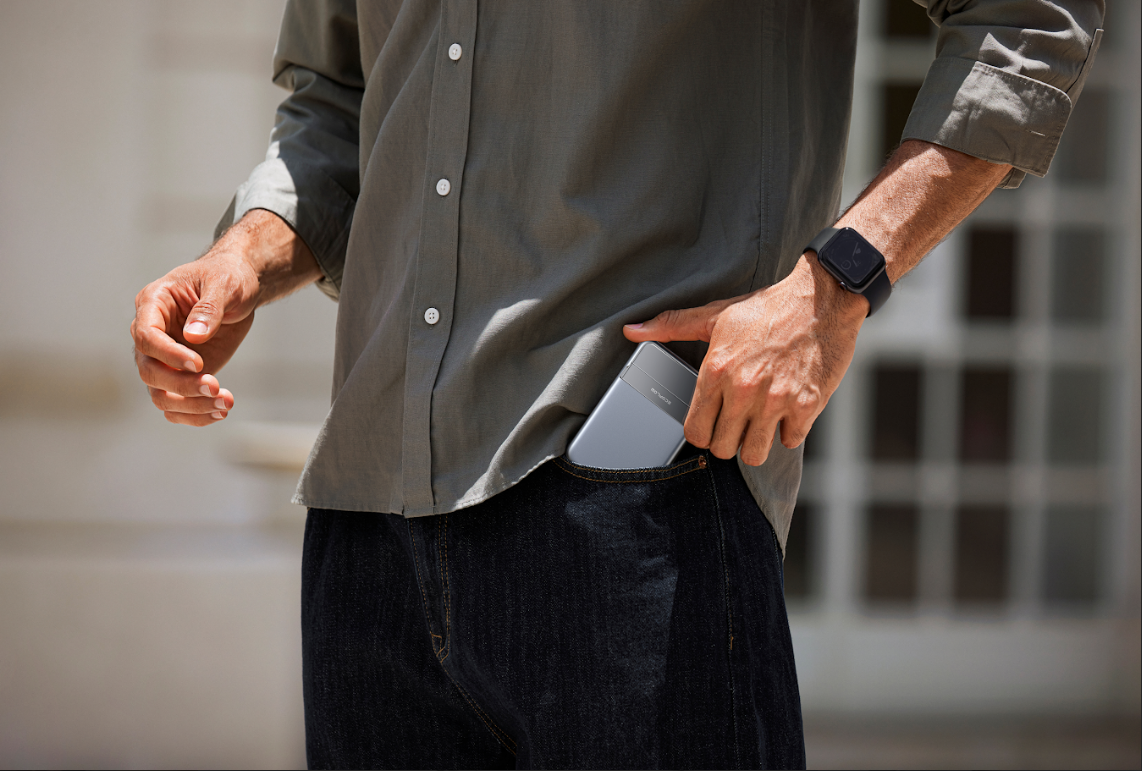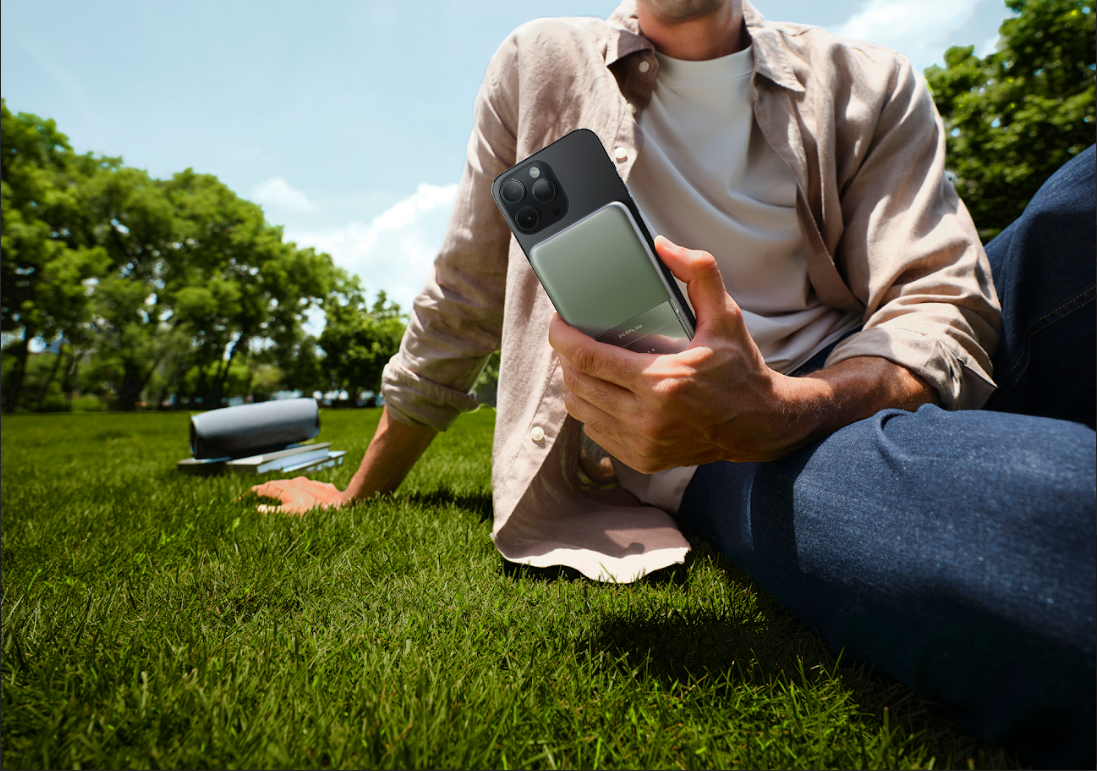How to Solve Low Battery Anxiety?
Low battery anxiety hits when your phone drops below 20% and you start feeling stressed about losing access to everything your phone provides – from communication and navigation to payments and emergency contacts. It's a common feeling that makes sense given how much we depend on our devices. This guide covers practical ways to keep your phone charged longer and manage the anxiety that comes with low battery warnings.
Proactive Steps to Prevent a Dead Battery
The best way to deal with low battery anxiety is to prevent the situation from happening in the first place. A few adjustments to your habits and gear can make a huge difference.
Create a Charging Routine
The most straightforward habit is to charge your phone every night. Make it a non-negotiable part of your evening so you start every day with a full battery. Beyond that, get into the habit of "top-up" charging during the day. Plug your phone in while you’re at your desk or during your commute if you drive. These small, regular charges can keep your battery level high and prevent it from dipping into the red later in the day.
Invest in Backup Charging Gear
Your best tool against a dead battery is a portable charger, also known as a power bank. When choosing one, look at its capacity, measured in mAh. A 10,000mAh model is a popular choice because it can fully charge most smartphones two or three times. Just remember to keep the power bank itself charged and carry it with you.
It also helps to have charging cables where you need them most. Keeping a few extra cables in key locations means you'll rarely be caught without one. Consider keeping one at each of these places:
- Your desk at work
- Your car
- Your travel bag or backpack
For an all-in-one solution, you could also get a battery case. It’s a phone case with a built-in battery that can double your phone’s life without needing to carry a separate power bank.
Adjust Your Phone's Settings for Longer Life
You can significantly extend your battery's daily life by changing a few settings. Your phone's screen is its biggest power draw, so simply lowering the brightness can have a major impact. Also, make sure to use Low Power Mode when your phone becomes low in battery; it automatically reduces background activities that drain power. It's also a good idea to go into your settings and turn off background app refresh and location services for apps that don't truly need them.


What to Do When Your Phone Is Low in Battery
Even with the best preparation, you might still find yourself with a low battery and no charger in sight. When that happens, the goal is to make the remaining power last as long as possible. Here are the immediate steps to take.
Prioritize Your Remaining Battery Life
First, stop and think about what you absolutely need your phone for in the immediate future. Are you waiting for an urgent call, do you need to access a digital flight ticket, or are you just casually Browse social media? Be honest with yourself and stop any non-essential activity. Using power for games or video will drain your last 10% in minutes.
If you're concerned someone might need to reach you, send a proactive text message like, "My battery is about to die, I'll get back to you once I can charge it." This manages their expectations and allows you to conserve the rest of your battery for a true emergency.
Change Key Settings to Save Power
Your phone's settings are your best tool for extending battery life. Take these steps immediately:
- Enable Low Power Mode. On both iPhone and Android, this is the quickest way to save power. This one-tap setting automatically reduces screen brightness, stops background app refreshes, and limits other non-essential functions.
- Manually Lower Screen Brightness. Your screen is the single biggest battery drain. Go into your settings and slide the brightness down to the lowest level you can still see.
- Turn Off Wi-Fi and Bluetooth. Even if you aren't connected to a network or device, these services use power by constantly scanning for signals. Turn them off completely in your settings, don't just disconnect from the current network.
- Use Airplane Mode. This is the ultimate battery-saving option short of turning the phone off. It disables all cellular, Wi-Fi, and Bluetooth radios. You won't be able to receive calls or texts, but it drastically slows the drain, buying you valuable time to find an outlet.
Look for Nearby Charging Options
When you need to find a plug, think creatively about your surroundings.
Many places offer access to power if you just ask. Coffee shops, fast-food restaurants, and bars are great options; it's good etiquette to buy a drink or a snack if you plan to stay and charge for a while. Don't overlook public spaces like libraries, hotel lobbies, airports, and train stations, which often have dedicated charging stations or accessible outlets.
If you have a laptop, you can use its USB port for a slow but reliable charge. In a real pinch, walk into a mobile carrier's store (like Verizon or AT&T) or a large electronics store. They often have charging stations and may be willing to help you out.
How to Build Resilience to Low Battery Anxiety
Practical tips are helpful, but a long-term solution requires addressing the anxiety itself. This involves changing your mindset and reducing your dependency on your phone.
Challenge the "Worst-Case Scenario"
Acknowledge the anxiety, but then question if your fears are realistic. Ask yourself: "What is the absolute worst thing that could happen if my phone dies right now?" You'll often find the actual consequence is a minor inconvenience, not the disaster you imagine. Learning to be comfortable with being disconnected occasionally is a key step. The world will not stop if you are temporarily unreachable.
Create Non-Digital Backups
Reduce your phone's role as a single point of failure by having real-world alternatives for its most essential functions. This gives you a safety net and proves you can manage without it.
- Emergency Contacts: Memorize or write down a few key phone numbers (a family member, a close friend) and keep the note in your wallet or purse.
- Money: Carry a small amount of cash ($20 should be enough) for emergencies where you might not be able to use mobile payments.
- Navigation: If you're going somewhere new and important, look at the route on a map before you leave. For critical trips, like getting to the airport, you could even print out the directions as a backup.
- Entertainment: Instead of relying on your phone to fill every quiet moment, bring a book or magazine with you, or simply spend the time observing your surroundings.
Practice Being Disconnected
Intentionally create "phone-free" periods in your day. Designate specific times—like during meals or the first hour after waking up—where you put your phone away and don't check it.
For a more direct approach, try a "low-battery walk." Leave home with your battery at 20% for a short, non-critical trip, like a walk to a nearby park. This simple exercise is a powerful way to reduce anxiety by proving you can function perfectly fine even when your phone is low in battery.
Maintain Power and Peace of Mind!
Overcoming low battery anxiety involves a dual approach: implementing practical preparedness measures and fostering a more balanced psychological relationship with your devices. The ultimate aim is not to live with a perpetually full battery but to reach a state where a low battery notification becomes a minor inconvenience rather than a trigger for panic. By taking proactive steps and adjusting your mindset, you can regain control and navigate the digital world with greater confidence and ease.


FAQs about Phone Batteries and Low Battery Anxiety
Q1: Why does my phone battery seem to die so quickly?
The single biggest drain on your phone's battery is the screen. The higher the brightness and the longer the screen is on, the faster your battery will deplete. Other major culprits include GPS navigation apps, apps that constantly update in the background (like social media or email), and searching for a signal in an area with poor cell service.
Q2: How do I choose the right power bank (portable charger)?
Look at the capacity, which is measured in mAh (milliampere-hours). For most people, a 10,000mAh power bank is the best choice, as it's small enough to carry easily and can charge a standard smartphone 2-3 times. If you just want a small backup for emergencies, a pocket-sized 5,000mAh model will provide about one full charge. For long trips or charging multiple devices, consider a larger 20,000mAh model.
Q3: Is it bad to leave my phone charging overnight?
No, this is generally safe for modern phones. Smartphones have built-in charge protection that automatically stops the charging process once the battery reaches 100%, so you don't have to worry about "overcharging." While some experts suggest keeping your battery between 20% and 80% for optimal long-term health, the convenience of waking up to a full charge is perfectly fine for everyday use.
Q4: What's the absolute fastest way to save battery if I only have 5% left?
Turn on Airplane Mode. This is the single most effective way to save power because it instantly shuts down all of your phone's most power-hungry components: the cellular radio, Wi-Fi, Bluetooth, and GPS. You won't be able to receive calls or messages while it's on, but it will dramatically slow the battery drain. You can periodically turn it off for a minute to check for messages before turning it back on.
Q5: How can I make my phone's battery last longer over its entire lifespan?
Two things are most important for the long-term health of your battery: avoiding extreme temperatures and avoiding frequent full discharges. Heat is the biggest enemy, so never leave your phone in a hot car or in direct sunlight for long periods. Secondly, try to avoid letting your battery drain to 0% regularly. Plugging it in when it gets down to around 20% is a great habit for preserving its overall lifespan.